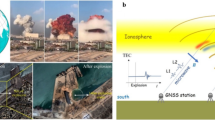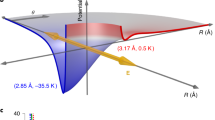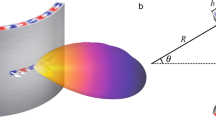Abstract
THE experimental investigation of the electrical structure of the upper atmosphere by means of wireless waves as the exploring agency has shown that there exist two main ionised regions from which such waves may be reflected. The lower of these regions is the Kennelly-Heaviside layer, which reflects long waves in long-distance transmission. The upper region is found to be much richer in ionisation than the lower, so that if we project vertically upwards waves of gradually increasing frequency (and therefore gradually shorter wave-length) we find that, at a certain critical frequency, the lower region is just penetrated and reflection takes place from the upper region.
This is a preview of subscription content, access via your institution
Access options
Subscribe to this journal
Receive 51 print issues and online access
$199.00 per year
only $3.90 per issue
Buy this article
- Purchase on SpringerLink
- Instant access to full article PDF
Prices may be subject to local taxes which are calculated during checkout
Similar content being viewed by others
Author information
Authors and Affiliations
Rights and permissions
About this article
Cite this article
APPLETON, E. A Method of Measuring Upper Atmospheric Ionisation. Nature 127, 197 (1931). https://doi.org/10.1038/127197a0
Issue date:
DOI: https://doi.org/10.1038/127197a0
This article is cited by
-
La ionosfera
Il Nuovo Cimento (1939)
-
Methods of Ionospheric Investigation
Nature (1934)
-
Effect of a Meteoric Shower on the Ionosphere
Nature (1934)
-
Effect of the Solar Eclipse on the Ionosphere
Nature (1933)



